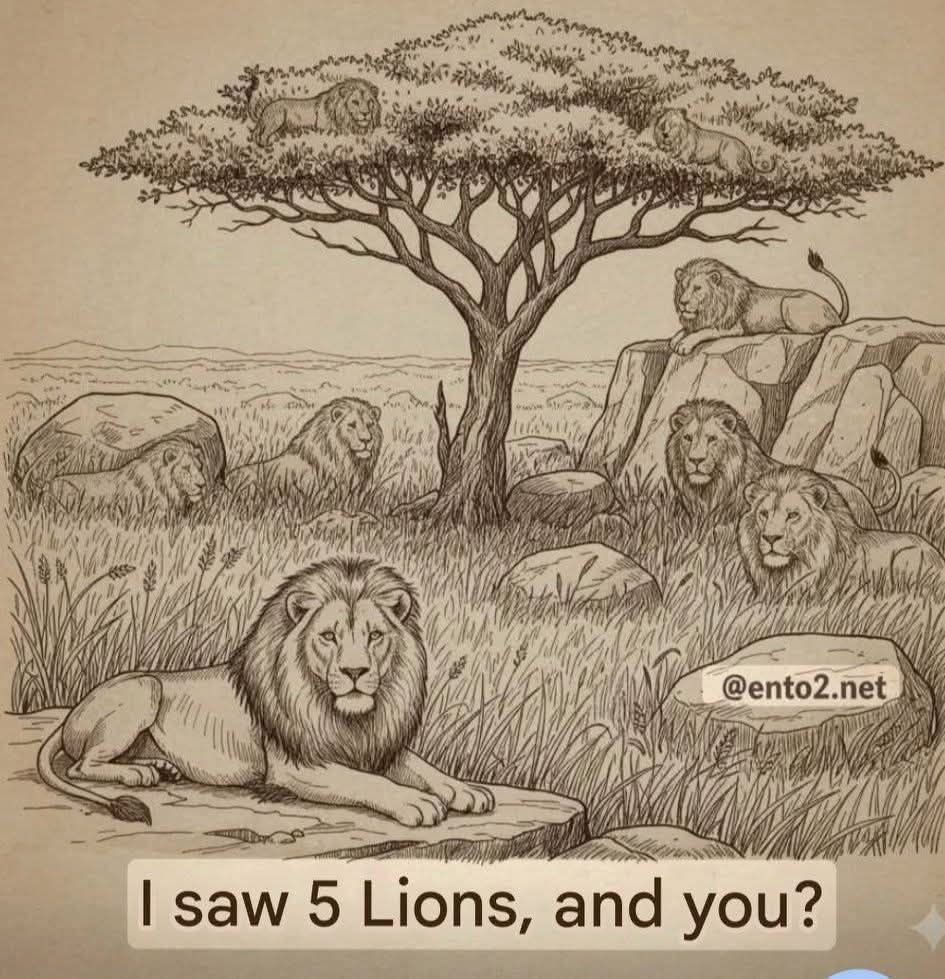Introduction
Visual perception plays a pivotal role in how we interpret the world around us. The human brain is constantly processing shapes, patterns, and contrasts — often filling in gaps or forming entire images based on partial information. A perfect demonstration of this phenomenon can be seen in illusionary artworks, such as the image above that challenges viewers to count the number of lions present. While some may quickly spot five lions, others might identify significantly more. So, how many lions do you see?
The Optical Illusion: More Than Meets the Eye
At first glance, the illustration appears to show a tranquil savanna scene with a few lions resting on rocks or under a tree. But upon closer inspection, the image reveals much more. Beyond the five obviously drawn lions, the landscape itself — rocks, trees, branches, and foliage — subtly form the outlines of additional lion faces, skillfully integrated into the environment by the artist.
This hidden imagery is not accidental. It leverages the brain’s natural tendency to recognize familiar patterns — a phenomenon known as pareidolia, where people perceive meaningful images in unrelated visual stimuli.
What This Puzzle Teaches Us About Visual Cognition
-
Pattern Recognition & Pareidolia
Our brains are hardwired to identify faces and figures, even where none intentionally exist. This trait was vital for human evolution — allowing early humans to spot animals or people in complex landscapes. -
Attention to Detail
Many of the hidden lions can only be seen with a heightened focus on detail. This encourages the viewer to slow down, scan the environment, and differentiate between foreground and background. -
Divergent Perception
No two people may see the exact same number of lions initially. This underlines how perception varies significantly between individuals, influenced by age, experience, visual acuity, and even mood. -
Engagement & Brain Training
Illusions like this are not only entertaining but also stimulate cognitive areas associated with memory, visual analysis, and problem-solving. They’re often used in education and therapy to sharpen focus and improve observational skills.Pages: 1 2

